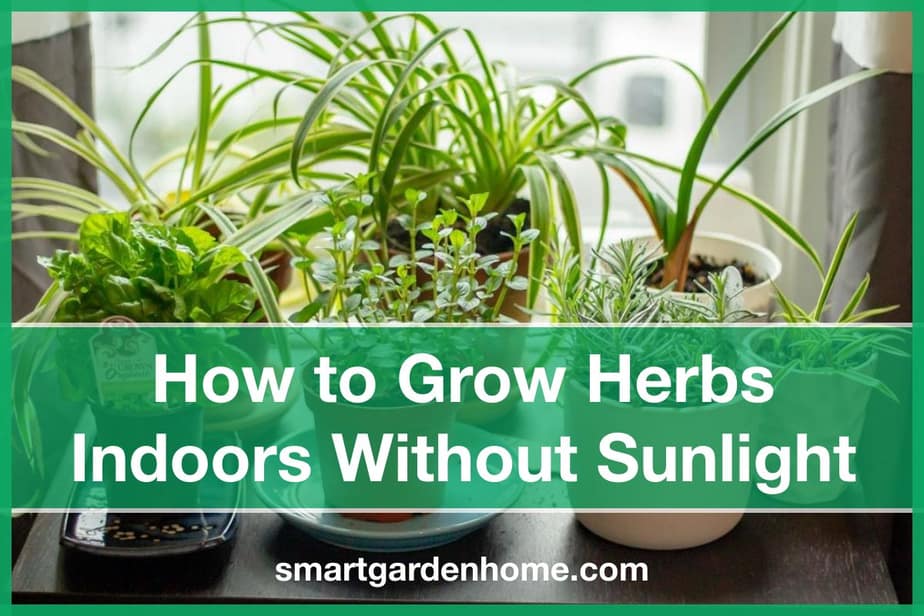Growing Herbs Indoors, No Sunlight Needed

Growing Herbs Indoors Without Sunlight: A Complete Guide
Ever wished you could grow your own herbs but thought your sun-deprived apartment couldn't handle it? Think again! Growing herbs indoors without sunlight is not only possible but also incredibly rewarding. Let's dive into the world of low light herb cultivation and see how you can harvest fresh herbs right from your windowsill, even without direct sunlight.
The Magic of Low Light Herbs
Some herbs thrive in low light conditions, making them perfect for indoor herb gardens. These herbs require less light than their sun-loving counterparts, making them an excellent choice for apartments or homes with limited natural light.
Herbs That Love the Shade
Meet your new best friends: mint, parsley, chives, and lemon balm. These herbs are known for their ability to flourish in low light conditions. They are the superstars of the shade, growing happily in north-facing windows or even under fluorescent lights.
Setting Up Your Indoor Herb Garden
Creating an indoor herb garden is a breeze. Here's what you need to know to set up your own little green oasis.
Choosing the Right Spot
Even without direct sunlight, your herbs need some light to grow. A north-facing window is an excellent choice for low light herbs. If you don't have a suitable window, don't worry – artificial light can also do the trick.
Artificial Light: Your New Best Friend
Artificial light can replace sunlight in your indoor herb garden. Fluorescent lights or LED grow lights are great options. They provide the right spectrum of light for plant growth and won't break the bank.
Caring for Your Low Light Herbs
Growing herbs indoors without sunlight requires a bit of TLC. Here's how to keep your herbs happy and healthy.
Watering: Less is More
Herbs grown in low light conditions need less water than their sun-loving siblings. Check the soil before watering – if it's dry about an inch down, it's time to give your herbs a drink.
Humidity: Creating a Greenhouse Effect
Indoor air can be dry, especially in winter. To keep your herbs happy, increase humidity by placing a tray of pebbles and water near your plants. This creates a mini greenhouse effect, keeping your herbs lush and green.
Windowsill Gardening: Herbs Within Reach
Growing herbs on your windowsill is both practical and beautiful. Here's how to create a windowsill garden that will make your neighbors green with envy.
Choosing the Right Containers
Pick shallow, wide containers for your windowsill garden. This gives your herbs plenty of room to grow while keeping them within easy reach for watering and harvesting.
DIY Windowsill Garden Ideas
Get creative with your windowsill garden. Repurpose old containers, use mason jars for a rustic look, or hang small pots from a tension rod for a unique, space-saving solution.
Advanced Techniques for Indoor Herb Cultivation
Ready to take your indoor herb garden to the next level? These advanced techniques will help you grow herbs like a pro.
Hydroponic Herb Gardens
Hydroponic systems allow you to grow herbs without soil, using nutrient-rich water instead. This method can speed up growth and increase yields, making it perfect for serious indoor gardeners.
Grow Lights: The Sun in a Box
If you're serious about growing herbs indoors without sunlight, invest in grow lights. These powerful lights mimic the sun's rays, giving your herbs the light they need to thrive. Check out this guide for more tips on growing herbs indoors.
Troubleshooting Common Problems
Even the greenest thumbs encounter problems now and then. Here's how to tackle common issues in your indoor herb garden.
Yellowing Leaves: What's Wrong?
Yellowing leaves can signal overwatering or nutrient deficiency. Cut back on watering and consider fertilizing your herbs with a balanced, water-soluble fertilizer.
Leggy Plants: When Herbs Get Too Tall
Herbs grown in low light conditions can become "leggy," growing tall and spindly. Pinch back the tips of your herbs to encourage bushier growth.
Harvesting and Using Your Homegrown Herbs
The best part of growing herbs indoors without sunlight? Harvesting and using them in your favorite recipes. Here's how to make the most of your homegrown herbs.
Harvesting Tips
Harvest herbs in the morning for the best flavor. Snip off the top few inches of growth, leaving plenty of leaves behind to encourage regrowth.
Preserving Your Herbs
To preserve your herbs, hang them upside down in a cool, dark place until dry. Then, store them in an airtight container for up to a year.
Conclusion
Growing herbs indoors without sunlight is not only possible but also incredibly rewarding. With the right herbs, a bit of care, and some creativity, you can enjoy fresh, homegrown herbs year-round. So, what are you waiting for? Start your indoor herb garden today!
FAQs
Q: What herbs can grow in low light? A: Herbs like mint, parsley, chives, and lemon balm thrive in low light conditions.
Q: Can I use artificial light to grow herbs? A: Yes! Fluorescent lights or LED grow lights can replace sunlight in your indoor herb garden.
Q: How often should I water my indoor herbs? A: Check the soil before watering. If it's dry about an inch down, it's time to water your herbs.
Q: What if my herbs become leggy? A: Pinch back the tips of your herbs to encourage bushier growth.
Q: How should I preserve my homegrown herbs? A: Hang your herbs upside down in a cool, dark place until dry, then store them in an airtight container.
0 Response to " Growing Herbs Indoors, No Sunlight Needed"
Post a Comment